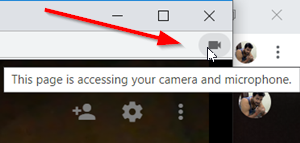

The video chat app supports calls of up to 50 people for free and has a screen-sharing option that can be used for business presentations. Skype, owned by Microsoft, is another popular option that is available for most mobile devices, tablets, computer operating systems and now as a web client. Others have used to host virtual virtual cocktail parties. Teachers have relied on it to continue their lessons. In recent days, Twitter has been filled with appreciative Zoom users. It also comes with a feature to "touch up" appearances using a built-in filter. Free group meetings are typically limited to 40 minutes but one neat feature lets users set up a virtual background. The free version offers unlimited one-to-one meetings but can also host up to 100 participants. Analysts estimate Zoom currently has 12.92 million monthly active users, as reported by CNBC. Citing data from tracking company Apptopia, The New York Times reported that close to 600,000 people had downloaded the iOS app in a single day earlier this month, sending it flying up the charts. Zoom, in particular, is enjoying an influx of users as a result of the COVID-19 outbreak. So which video chatting application should you be using? Zoom But while the core functionality is basically the same in each service, some software will be better suited for business use than social activities. If you simply want to call a single person, any of the above applications will work just fine. The most popular include Zoom, Hangouts, Skype, FaceTime, WhatsApp, Duo, WhatsApp and Houseparty. Luckily, there are a lot of options available, with apps and websites offering seamless, and crucially free, services for desktops, laptops and the iOS and Android mobile ecosystems. With self-isolation, lockdowns, quarantines and strict social distancing measures now in place in many countries across the world, video-calling has also become the main way for people to communicate and socialize with family or friends. The novel coronavirus outbreak has fueled a boom in video-call software, with entire workforces and classrooms having to adapt to working or learning from home.īut for many people, it goes further than that.


 0 kommentar(er)
0 kommentar(er)
